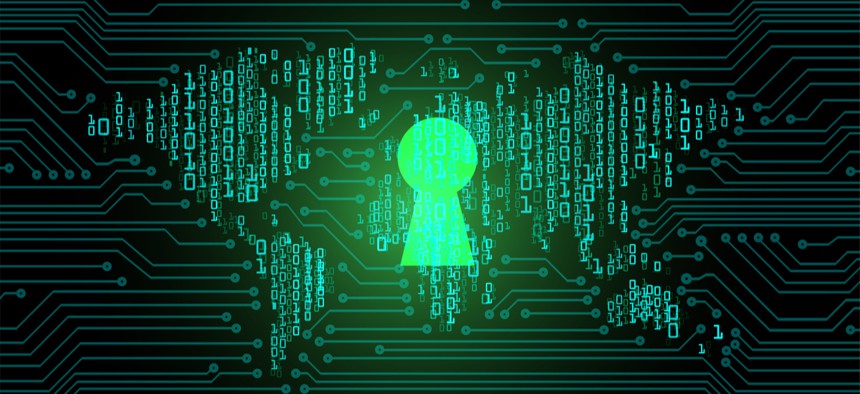Encryption and a New Paradigm for Security’s Data-Centric Future

Titima Ongkantong/Shutterstock.com
ITAR’s new encryption carve-out paves the way for secure and private collaboration.
On December 26, after more than four years of deliberation, the U.S. government issued a ruling modernizing and unifying the role of end-to-end encryption in securing sensitive data and enabling cloud modernization. The International Traffic in Arms Regulations’ new encryption rule promises to dramatically improve data security while lowering costs and enhancing the productivity of our defense industrial base.
Unless you are familiar with the complexities of the ITAR and export policies in general, this news may not be on your radar. Know this: The impact of this new ruling extends far beyond manufacturers of defense-related items (including satellites, drones, internet-of-things sensors and much more) and is a significant step toward the U.S. recognizing the powerful roles that encryption and control play in data security and privacy.
The two of us come from backgrounds that stand at the intersection of technology and policy—John as White House technology policy adviser and the director of policy and planning at the Commerce Department, and Robert as a former foreign affairs officer at the State Department squarely focused on ITAR export controls—which have allowed us to see firsthand the perils and inefficiencies of legacy approaches to data protection. With this ruling, the U.S. government deserves praise for creating a new data protection paradigm, one which we expect both will drive cloud adoption and enhance data security for organizations handling extremely sensitive data.
Freeing an Industry Captive to a Legacy Approach
More than four years after discussions first began, the Directorate of Defense Trade Controls (DDTC) and State Department have released a new amendment to the ITAR—which controls exports of military- and defense-related items, technology, and associated data—stating that technical data protected with end-to-end encryption, such that it cannot be accessed by foreign entities, is no longer considered to be “exported” under the ITAR. As a result, organizations no longer have to apply and wait for an export license to share data with authorized individuals domestically or overseas.
Having recognized where the center of control needs to be (encryption and key management), the State Department has freed ITAR-compliant organizations from an antiquated approach to security. Where the sharing of ITAR technical data was previously a roadblock, it is now an opportunity to unlock innovation within the heavy manufacturing, aerospace and defense, defense contracting and telecommunications industries.
Due to ITAR’s geolocation and access requirements, compliant organizations have exhausted thousands of hours and tens of millions of dollars maintaining multiple systems—one in the cloud that affords them all the benefits of a digital workplace and another on-premises system solely for their ITAR technical data that met stringent requirements.
Now organizations can operate a unified system, and collaboration with overseas partners, U.S. officials, and other authorized individuals will become more seamless. At the same time, the security and integrity of ITAR technical data are maintained, and our country’s defense initiatives remain protected from unauthorized access.
Although the implications of this new rule for military and defense supply chain organizations are tangible, most significant perhaps is the represented shift that is underway: securing data at the network level is no longer sufficient or productive; a data-centric approach is required for optimal security while empowering organizations to collaborate, innovate, and push their business forward.
Where Security Meets Privacy
This shift toward a data-centric approach to cybersecurity also signifies a noteworthy inflection point: one in which security meets privacy.
Cybersecurity challenges—such as the sharing of ITAR technical data—and privacy regulations, have positively affected the crossover of these two traditionally separate spaces. Where security is defined as protecting digital data from unwanted actions and unauthorized users, privacy boils down to one key component of that: preventing unauthorized access.
It is our hope that ITAR’s encryption carve-out represents both an intersection of security and privacy and a digital transformation that will inspire other organizations, across all industries, to shake their legacy approach to cybersecurity, and begin to realize the benefits of a secure digital workplace. If this new rule is any indication, organizations can trust that both the security and privacy communities, as well as the U.S. government, are focused on empowering organizations and individuals to have complete control over their data by knowing where it is and who has access. As we commend the State Department for embedding privacy to secure mission-critical workflows, we have reason to remain hopeful that similar compliance regimes will follow suit, all in the name of protecting our most sensitive data.
John Ackerly is the chief executive officer and co-founder of Virtru and was formerly responsible for technology policy at the White House and was the policy and strategic planning director at the U.S. Department of Commerce.
Robert Monjay is an attorney at Akin, Gump, Strauss, Hauer and Feld LLP. He previously served as a foreign affairs officer at the U.S. Department of State's Directorate of Defense Trade Controls Policy Office.
NEXT STORY: 20 Seconds to Optimize Hand Wellness





